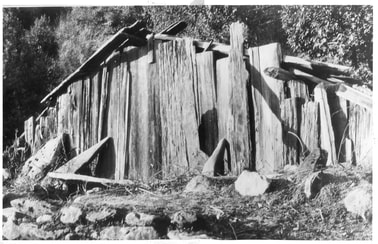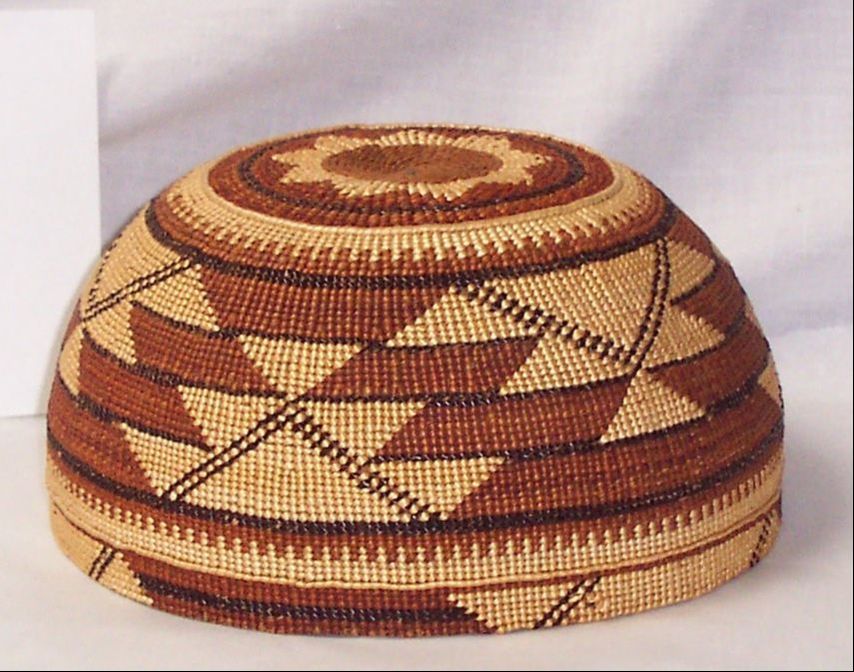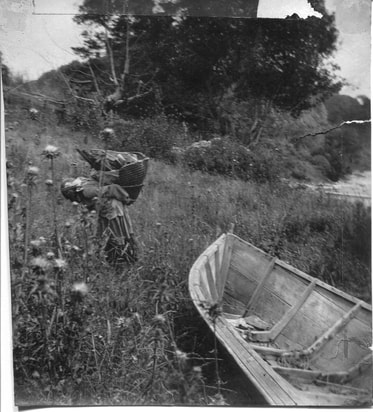Land Acknowledgement by the Clarke Museum Staff |
The Clarke Historical Museum sits on Wiyot land in Eureka on the shores of Humboldt Bay, the traditional homeland of the Wiyot peoples of the Wiyot tribe, Blue Lake Rancheria, and Bear River Rancheria. The land that Eureka sits on is known in the Wiyot language as Jaroujiji, where you sit and rest, while Humboldt Bay is known as Wigi, after a story of how the bay became a saltwater bay. Despite actions sanctioned by the local, State and Federal governments designed specifically to remove the Wiyot (and other indigenous peoples) from the land and destroy their cultural practices, Wiyot people remain on these lands and practice ceremonies central to the maintenance of their traditions, culture, and landscape. They continue to shape the history and knowledge of this place and are actively working to restore the land stolen from them.
In response to this, the Clarke Museum pledges to continue working towards a more socially just museum through educating the public on the past, present, and future of the museum’s Native collections and related programming, and returning stolen items that are found in the museum’s collections. We encourage the public to educate themselves about whose lands they live on and the cultural heritage of the people who have been forcibly removed (see https://native-land.ca/), along with the original place names in local languages. |
Nealis Hall
Welcome to Nealis Hall, the Native American wing of the Clarke Historical Museum dedicated to honoring & teaching about local Native American tribes. This room focuses on the culture of the Wiyot (whose ancestral territory we are on), Yurok, Karuk and Hupa Tribes.
|
Indigenous northwest California is best seen as a cultural complex, a sort of cultural juggernaut unto itself, and vastly different from the many other tribal cultural complexes in the west. With many tribes living in this region illustrates that the abundance of fresh water and relatively easy access to food enabled these groups to live in relative harmony with each other and with the environment, though conflicts did occur. While there is a unity of cultural vision and practice within the region, neighboring tribal groups speak languages from 3 distinct and unrelated language families, emphasizing the cultural diversity of this region.
|
Local culture is grounded in the environment, the land, the rivers and streams, and in the plant and animal life. The mountains watch the people, it is believed. The sky and land are essentially one with only the thinnest zone separating them. The earth is deified to those who adhere to the traditional beliefs. The plants are known for their curative qualities and continue to be used in healing ceremonies.
Local tribal culture possesses a powerful way of life that is essentially spiritually directed and practiced: the Fixing the Earth Way. The tribal groups of the region share in the belief system. Each tribal group performs certain rituals, recites prayers and performs the White Deerskin and Jump Dances to Fix the Earth. These ceremonials are uniform in appearance yet each group has their own individualized purpose and formulaic prayers reflecting their origins and relationship with the earth.
Local tribal culture possesses a powerful way of life that is essentially spiritually directed and practiced: the Fixing the Earth Way. The tribal groups of the region share in the belief system. Each tribal group performs certain rituals, recites prayers and performs the White Deerskin and Jump Dances to Fix the Earth. These ceremonials are uniform in appearance yet each group has their own individualized purpose and formulaic prayers reflecting their origins and relationship with the earth.
|
Acorns and salmon were traditionally the staple food groups for this region. To leach out the bitter tannins in acorns is an involved process, which is illustrated in a display in Nealis Hall. Salmon has been and remains the staple food for local Natives today. Tools associated with fishing and woodworking are in the cases in front of the redwood dugout canoe, which was important for transportation.
Basketry continues to be very important to local culture. There are essentially three types of baskets: utilitarian, ceremonial and trinket baskets. Basketry caps (traditionally worn by women during ceremony) and trinket baskets are both finely woven and are usually decorated with bold design patterns. Trinket baskets were often made by weavers as gifts for others or sold. As with caps, the greater the number of stitches the more prized they became. Utilitarian baskets come in many sizes and shapes: cooking and eating baskets, burden baskets for carrying items and trays for sifting. There are many different type of baskets that have occurred in contemporary times, including the decorative wall mats, earrings, necklace pendants and many others. |
The first recorded "discovery" of Humboldt Bay by Europeans was in 1806 by Captain Jonathan Winship. Sustained contact began in 1849 when Josiah Gregg journeyed overland to Humboldt Bay. His party of explorers was met by Wiyot headman Ki-we-lat-tah on the day following their arrival at Humboldt Bay. According to L. K. Wood, Ki-we-lat-tah and his family rowed across the bay to greet the party of explorers, welcoming them with a feast of clams and providing them with "every means of comfort in his power." It was the discovery of gold in 1849 that brought Euro-American settlement to the Bay, and resulted in the destruction of traditional lifeways for local tribes. Though depredations occurred on both sides, tribes suffered heavily with massacres and forced assimilation into Western culture. Yet despite this difficult history, Native American culture continues to this day.
|
The earth is at the heart of all indigenous peoples based on fishing, hunting and gathering. Ceremonial life included the gathering together of a multitude of natural materials: woods, plants, feathers, hides, animal parts and minerals—all provided by the earth. The Native knowledge required to identify resources and to fabricate dance regalia, traditional dance houses, boats and the many tools and implements needed to hunt, gather and store materials was possessed by the elder men and women of the tribe.
A sea change has occurred among Native people. All traditional ceremonies have been re-established. There is a stabilizing of cultural knowledge that now exists that was fast on the wane in the 1970s. Traditional arts are being made by a growing list of traditional artists, with children learning traditions today that were once endangered. Information from Julian Lang’s Pieep Karu Payeem—Long Ago and Today: Exhibition of Karuk Arts, 2012 and http://www.wiyot.us/cultural. |



